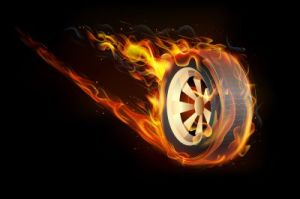 Certain incidences like contact with overhead power lines may cause truck tyres, cranes and other heavy vehicles to be caught on fire and thus lead to explosion. As of to date, five workers have already been killed over the past years. A number of more workers were injured as heat develops in tyres that may lead to a phenomenon known as pyrolysis.
Certain incidences like contact with overhead power lines may cause truck tyres, cranes and other heavy vehicles to be caught on fire and thus lead to explosion. As of to date, five workers have already been killed over the past years. A number of more workers were injured as heat develops in tyres that may lead to a phenomenon known as pyrolysis.
Excess heat build up may lead to pyrolysis or when heat is applied to a tyre. Decomposition of compounds will be the result of heat build up and the compounds in it such as rubber will have the tendency to create flammable vapour, gas and oils. The quantity of this fuel to the air used to inflate the tyres is dangerous and may end up to explosive limits. A tyre explosion can release huge amounts of energy. This often results to damage of the equipment, deaths, or serious injuries within the radius of 300 metres.
Pyrolysis induced explosions happen unexpectedly, it can be as fast in a split second and could last up to 24 hours after heat was compressed to the tyres. Prior to the explosion, the combustion can occur with no obvious signs of fire on the external of the tyre.
Oxy/acetylene heating wheel nuts, wheel motor fires, overheating brakes and welding on wheel rims are the most common sources of heat that causes tyre pyrolysis. Some other incidents include a rubber tyred vehicle that has been involved in high voltage electrical work which results from electrical arcing and current flow.
It can happen to all kinds of tyres taking into consideration that these explosions generally happen in split rim configurations. More often, after a collision with overhead power lines, vehicles that are more prone to damage have included rubber tyred cranes. A potential work hazard can come from any pneumatic rubber tyred vehicle involved in an incident where an electrical damage leads to discharges or arcing around the tyres.
Companies engaged in earthmoving business have formulated procedures as guidelines when there is hazard of a tyre explosion and this may include a rubber tyred vehicle that came into contact with overhead power lines. The following are the precautionary measures:
- Isolation zone should be the proper parking place;
- Transfer everyone from the area and ban anyone to re-enter the isolation zone 24 hours.
- Fire fighting services should be alerted.
If pneumatic tyres are filled with nitrogen instead of air, it contracts and it does not discount the risk of tyre explosion.


